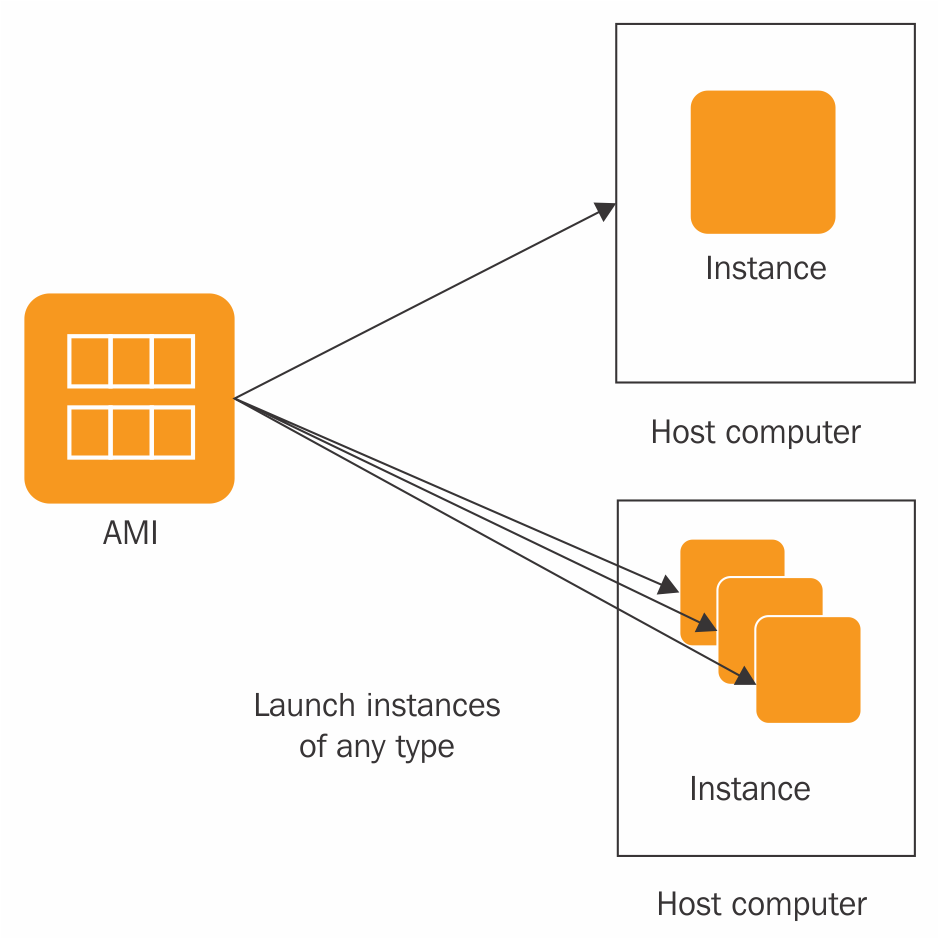AMIs
While launching an instance, you may have a specific requirement such as an operating system, preinstalled software, a number of EBS volumes, and their respective size. To cater to such a requirement, AWS uses a feature called an AMI.
An AMI contains a set of information to launch an instance:
- It contains a template that includes information such as operating system, application server, and any other application software
- It contains launch permissions describing which AWS account can use the AMI to spin up new instance
- It also contains block device mapping, describing the volume information to be attached to the instance while launching
You can specify the AMI while launching an instance. An AMI can be used to launch as many instances as required; however, an instance can be based on a single AMI. You can also use multiple AMIs as required to launch different instances. The following figure helps to understand how multiple EC2 instances from a single AMI can be created:

Figure 5.2: Concept...




































































